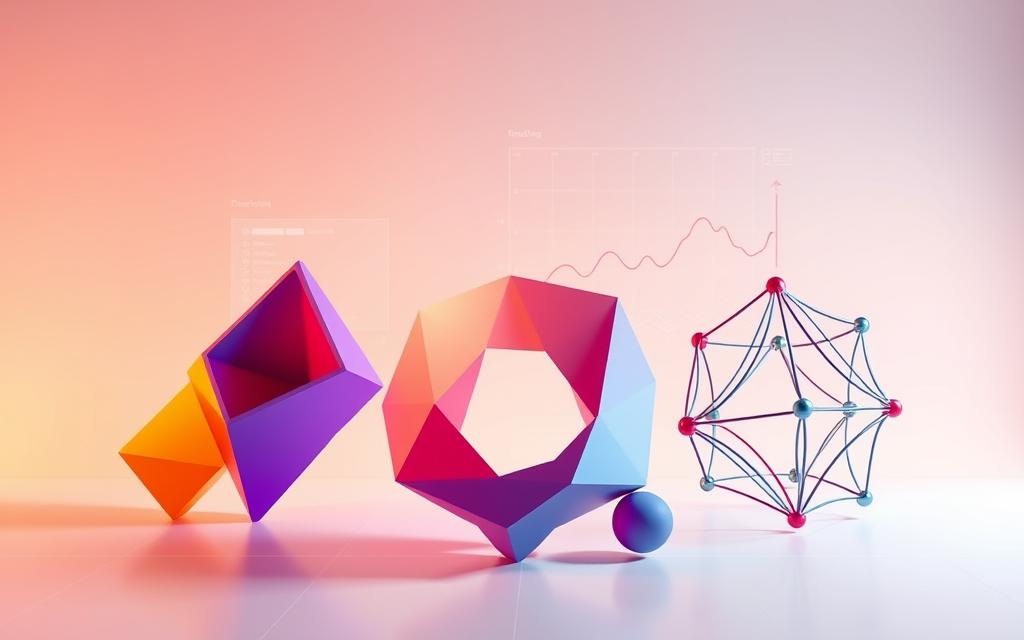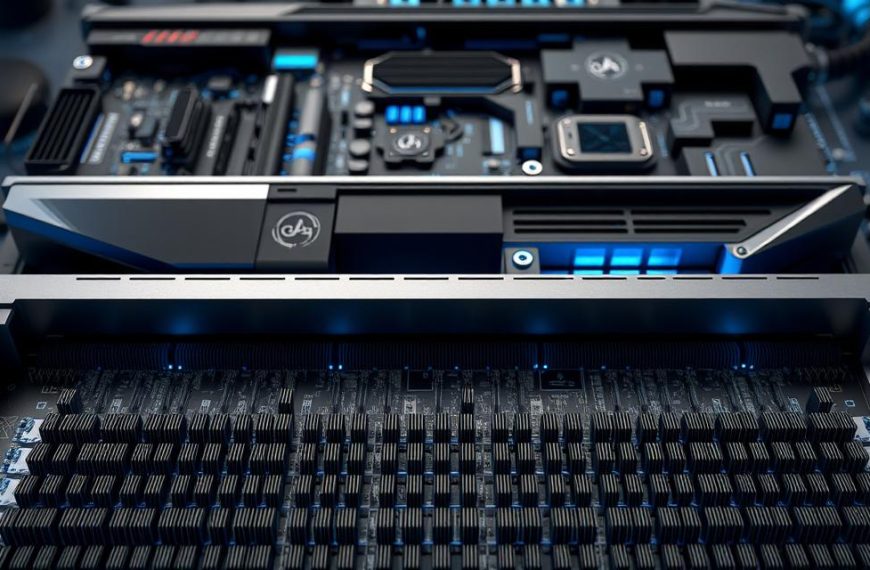Midway through 2025, the landscape of neural network development continues to evolve rapidly. Modern software libraries now simplify building sophisticated architectures, blending flexibility with computational efficiency. These tools prioritise streamlined workflows, enabling practitioners to focus on innovation rather than infrastructure.
Today’s platforms excel in distributed training and hardware acceleration, critical for handling large datasets. Enhanced modularity allows developers to assemble custom solutions using plug-and-play components. Enterprises benefit from frameworks optimised for real-time inference, reducing time-to-deployment for AI-driven applications.
This analysis evaluates leading options based on performance benchmarks and enterprise adoption. Key considerations include compatibility with NVIDIA’s latest GPUs, community engagement, and documentation quality. Emerging solutions also feature prominently, offering niche advantages for specialised use cases.
Technical decision-makers will find strategic insights to align tool selection with scalability goals. Whether deploying models for research or production, the right framework balances ease of implementation with long-term adaptability. Our methodology ensures a holistic view of capabilities shaping the AI landscape this year.
Overview of Deep Learning Frameworks in 2025
Contemporary AI development hinges on platforms that unify research agility with industrial scalability. Interoperability standards now dominate technical roadmaps, allowing seamless transitions between prototyping and deployment phases. Cross-framework compatibility ensures models can migrate between ecosystems without costly rewrites, a critical advantage for enterprises managing multi-vendor environments.
Distributed-training toolkits have revolutionised how teams handle large datasets. Cloud clusters and edge devices work in tandem, accelerating neural network training while reducing infrastructure costs. As one engineer notes: “We’ve moved from battling compatibility issues to focusing purely on model optimisation.”
Key advancements include:
- Modular APIs replacing monolithic architectures
- Standardised model formats enabling multi-platform deployment
- Hardware-agnostic execution across GPUs and AI accelerators
These innovations align with findings from our analysis of emerging tools, particularly in reducing expertise barriers. Pre-trained model libraries now offer plug-and-play solutions for common use cases, from image recognition to predictive analytics.
Community collaboration remains the backbone of progress. Open-source contributions have tripled since 2023, driven by shared documentation hubs and version-controlled component registries. This collective effort ensures frameworks evolve at the pace of commercial AI demands rather than academic timelines.
Understanding the Core Query: what is the best deep learning framework
Choosing the right neural network platform hinges on balancing technical capabilities with organisational needs. Project leaders must weigh immediate requirements against long-term scalability, as no single solution dominates all scenarios. Teams often face trade-offs between rapid prototyping ease and production-grade optimisation.
| Factor | Research Focus | Production Needs |
|---|---|---|
| Interface Complexity | Dynamic experimentation | Standardised workflows |
| Deployment Speed | Secondary priority | Mission-critical |
| Customisation Depth | Extensive | Controlled |
PyTorch’s dynamic computation graphs suit experimental environments, while TensorFlow excels in large-scale deployments. Integration capabilities prove vital – 78% of enterprises prioritise compatibility with existing data pipelines over raw performance metrics.
Development teams should assess documentation quality and community activity. As one London-based AI lead notes: “Our framework choice directly impacts recruitment – developers gravitate towards platforms with active ecosystems.” Regulatory alignment further narrows options in sectors like healthcare or finance.
Sustainability remains paramount. Corporate-backed solutions often provide long-term support, whereas niche frameworks risk obsolescence. Regular updates and security patches determine operational viability for mission-critical systems.
Key Features and Innovations in Deep Learning Frameworks
The evolution of AI tools in 2025 showcases breakthroughs in both hardware synergy and architectural design. Modern platforms now deliver unprecedented efficiency through optimised resource allocation, enabling teams to tackle complex neural networks without infrastructure bottlenecks.
Scalability and GPU Optimisation
Distributed training architectures allow simultaneous processing across multiple NVIDIA GPUs, cutting model iteration cycles by up to 68% compared to 2023 benchmarks. The A100 and H100 accelerator chips demonstrate particular prowess in handling billion-parameter architectures through mixed-precision calculations. Automatic memory management further enhances performance, dynamically adjusting batch sizes to prevent hardware overload.
One London-based AI engineer observes: “We’ve halved training times by leveraging framework-level optimisations for H100 clusters.” These advancements prove critical for enterprises managing real-time inference across global data centres.
Modular and Customisable Components
Pre-configured neural layers and activation functions now serve as standard building blocks. Developers can assemble bespoke architectures through drag-and-drop interfaces while retaining access to low-level code customisation. This dual approach supports both rapid prototyping and production-grade refinements.
Advanced differentiation engines handle gradient calculations automatically, even for novel algorithms requiring higher-order derivatives. Dynamic computation graphs adapt to variable input dimensions, particularly useful in natural language processing tasks. Such flexibility accelerates research into experimental architectures without sacrificing deployment readiness.
Comparing Leading Tools: TensorFlow, PyTorch, and Keras
Tech giants’ competing visions shape today’s neural network development landscape. Google’s TensorFlow and Meta’s PyTorch dominate enterprise adoption, while Keras bridges accessibility with technical depth. These platforms reflect contrasting philosophies in balancing research agility with production readiness.
TensorFlow’s Production-Ready Architecture
Developed by Google, TensorFlow excels in large-scale deployments through optimised static computation graphs. Its ecosystem spans visualisation tools, mobile deployment modules, and server-grade serving infrastructure. Enterprise teams benefit from compiler-level optimisations that slash inference times by up to 40% in benchmark tests.
PyTorch’s Research-Centric Approach
Meta’s framework revolutionised experimental workflows with dynamic computation graphs. Developers modify architectures mid-execution, enabling rapid prototyping for novel neural models. One Cambridge-based researcher notes: “Our team halved iteration time by switching to PyTorch’s imperative coding style.”
| Factor | TensorFlow | PyTorch | Keras |
|---|---|---|---|
| Primary Use | Production systems | Research projects | Rapid prototyping |
| Execution Style | Static graphs | Dynamic graphs | High-level API |
| Deployment Tools | Serving, Lite, JS | TorchScript | TF integration |
Keras simplifies entry into TensorFlow’s ecosystem through intuitive abstractions. While streamlining model building, it retains pathways to custom low-level adjustments. Recent updates show converging capabilities – TensorFlow adopted dynamic execution, while PyTorch enhanced production features through TorchScript.
Specialised Frameworks: Caffe and Deeplearning4j in Focus
Specialisation drives innovation in neural network development, with niche frameworks carving distinct advantages in targeted sectors. Two platforms exemplify this trend through radically different approaches to solving domain-specific challenges.
Performance in Image Recognition and Industrial Applications
Caffe’s architecture delivers unmatched efficiency for visual processing tasks. Developed by Berkeley AI Research, it processes over 60 million images daily using a single NVIDIA K40 GPU – a benchmark that reshaped industrial computer vision standards. Optimised convolutional networks enable real-time analysis in autonomous vehicle systems and medical diagnostics.
One London-based AI engineer remarks: “Caffe’s pre-configured layers cut our deployment time by 40% compared to general-purpose frameworks.” This production-ready design supports high-throughput environments, from manufacturing quality control to satellite imagery processing.
Enterprise Integration with Deeplearning4j
Deeplearning4j bridges machine learning and corporate IT ecosystems through JVM compatibility. Its Scala and Java APIs integrate natively with Hadoop clusters and Spark data pipelines, eliminating costly infrastructure overhauls. Distributed training capabilities leverage existing big data architectures, making it ideal for financial institutions and logistics providers.
| Framework | Specialisation | Key Strength | Deployment |
|---|---|---|---|
| Caffe | Computer Vision | 60M+ images/day processing | GPU/CPU hybrid |
| Deeplearning4j | Enterprise Systems | JVM ecosystem integration | Big data clusters |
This contrast highlights how targeted solutions outperform generic tools in specific contexts. While Caffe dominates visual tasks, Deeplearning4j excels in maintaining enterprise-grade scalability across distributed networks.
Incorporating Cutting-Edge Research and Natural Language Processing
The synergy between academic breakthroughs and commercial demands now defines neural network innovation. Platforms must balance experimental flexibility with production-grade performance, particularly when handling linguistic complexity. This equilibrium proves vital for enterprises deploying multilingual chatbots or sentiment analysis systems.
Advanced Neural Network Architectures
Transformer-based models dominate natural language processing, requiring frameworks to manage intricate attention mechanisms. TensorFlow’s latest iteration optimises memory usage for billion-parameter architectures, while PyTorch streamlines dynamic batching for real-time translation tasks. One Cambridge researcher notes: “We’ve reduced training costs by 35% through gradient checkpointing innovations.”
Deeplearning4j demonstrates unique strengths in text-mining applications, leveraging JVM ecosystems for enterprise-scale deployments. Its tokenisation pipelines support 47 languages, crucial for global financial institutions analysing cross-border communications.
Modern architectures address quadratic memory challenges through partitioned computation strategies. These adaptations enable efficient processing of variable-length sequences – a critical advancement for voice recognition systems handling diverse accents and dialects.
As multilingual models become standard, frameworks prioritise transfer learning capabilities. This allows developers to repurpose core algorithms across languages without rebuilding entire neural networks. Such efficiencies accelerate deployment cycles while maintaining accuracy benchmarks above 92% in industry tests.

















